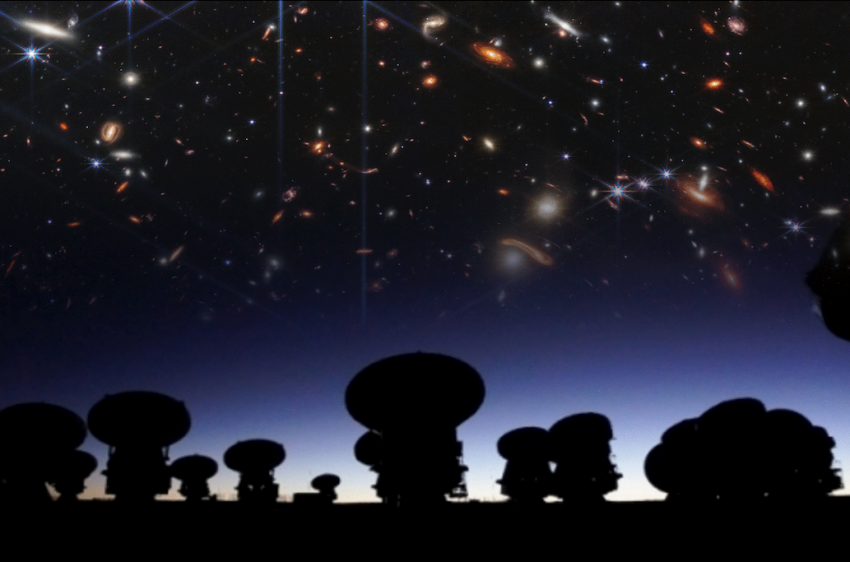Book a Fellows February SDM In Person or Online ticket
Book a Non Fellows February SDM In Person or Online Ticket
In the past decades the study of the high-redshift Universe has been dominated by observations of mostly unobscured sources found in optical and near-infrared surveys from telescopes such as Hubble and now JWST.
Despite the clear power of near-infrared photometry and spectroscopy in finding and studying distant galaxies, the wavelength coverage of these data limits direct measurements of the interstellar gas and dust. Deep sub-mm and radio surveys from e.g. ALMA and the VLA are now able to provide measurements of the obscured star-formation, ISM conditions and potential AGN contribution for the first time at z > 4.
Furthermore, line intensity mapping experiments can provide global constraints on gas properties in galaxies, from HI as well as CO lines. Both global CO and HI constraints from experiments like COMAP, CHIME and SKA will provide complementary information on star formation and general galaxy evolution at high-z.
In this specialist discussion meeting we will summarise and discuss what we can learn by combining multi-wavelength/radio/sub-mm observations with current optical/NIR data from HST/JWST. The primary topics for discussion are:
- Properties of high-z galaxies from optical/NIR observations
- Constraints on the ISM and dust in these galaxies
- The contribution of `HST’-dark/heavily dusty obscured/quiescent objects
- The abundance and multi-wavelength signatures of AGN in high-z galaxies
- HI and CO gas constraints from line intensity mapping
We aim to bring together experts on both optical/NIR and sub-mm/radio properties of galaxies in the first few billion years to share knowledge and discuss existing or new synergies.
The meeting is timely given we will have had 1.5 years of JWST results and follow-up of these sources with ALMA and other facilities, in addition to the recent completion of deep radio surveys such as the MeerKAT and LOFAR deep fields
Confirmed speakers:
Jose Bernal
Ilse de Looze
Matt Jarvis
If you would like to present a contributed talk, please fill out the following form by 10th December: https://forms.office.com/e/jXvqMxsZb6
Radio and intensity mapping probes at high redshift
10.30 Matt Jarvis - invited talk
11.00 Yifan Ding “Identification of Herschel sources using MeerKAT”
11.15 Harry Bevins “21cm Cosmology as a probe of the high redshift Universe”
11.30 Jose Bernal - invited talk
12.00 Session discussion panel (Chaired by Renske Smit)
12.30 Lunch
The importance of dust, AGN and the power of JWST
13.30 Ilse De Looze - invited talk
14.00 Laia Barrufet “Unveiling the Nature of HST-Dark Galaxies with Early JWST Imaging and Spectroscopy”
14.15 Joris Witstok “Carbonaceous dust grains seen in the first billion years of cosmic time”
14.30 Sian Grace Phillips “Synergistic multi-tracer observations unveil Epoch of Reionization galaxy evolution”
14.45 Jan Scholtz “Dusty star-burst galaxy at z~6.8 with NIRSpec IFU and ALMA”
15.00 Session discussion panel (Chaired by Nathan Adams)
15.30 Close
Organisers:
Rebecca Bowler
Renske Smit
Laura Wolz
Nathan Adams
Chris Conselice


